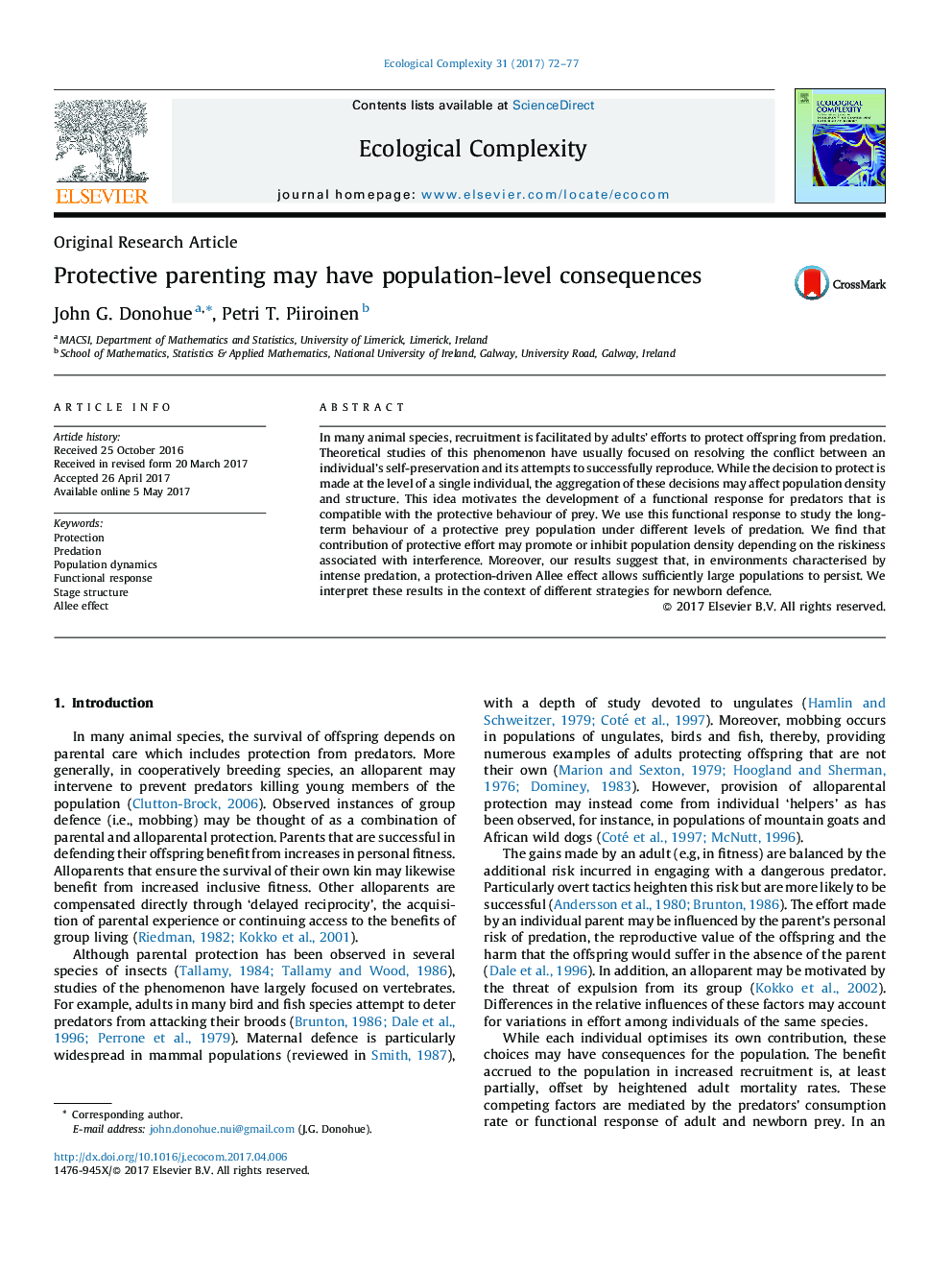| Article ID | Journal | Published Year | Pages | File Type |
|---|---|---|---|---|
| 5741259 | Ecological Complexity | 2017 | 6 Pages |
â¢We derive a functional response compatible with protective parenting in a prey population.â¢Steady-state solutions of a predator-prey system that incorporates this response are studied.â¢The riskiness associated with protection determines how this behaviour influences prey dynamics.â¢Parental protection may be necessary for population survival when predation is particularly intense.
In many animal species, recruitment is facilitated by adults' efforts to protect offspring from predation. Theoretical studies of this phenomenon have usually focused on resolving the conflict between an individual's self-preservation and its attempts to successfully reproduce. While the decision to protect is made at the level of a single individual, the aggregation of these decisions may affect population density and structure. This idea motivates the development of a functional response for predators that is compatible with the protective behaviour of prey. We use this functional response to study the long-term behaviour of a protective prey population under different levels of predation. We find that contribution of protective effort may promote or inhibit population density depending on the riskiness associated with interference. Moreover, our results suggest that, in environments characterised by intense predation, a protection-driven Allee effect allows sufficiently large populations to persist. We interpret these results in the context of different strategies for newborn defence.
